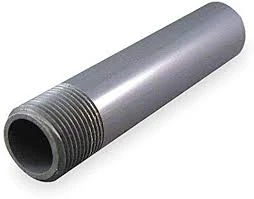-
Cangzhou Yulong Steel Co., Ltd.
-
Phone:
+86 13303177267 -
Email:
admin@ylsteelfittings.com
- English
- Arabic
- Italian
- Spanish
- Portuguese
- German
- kazakh
- Persian
- Greek
- French
- Russian
- Polish
- Thai
- Indonesian
- Vietnamese
- Zulu
- Korean
- Uzbek
- Hindi
- Serbian
- Malay
- Ukrainian
- Gujarati
- Haitian Creole
- hausa
- hawaiian
- Hebrew
- Miao
- Hungarian
- Icelandic
- igbo
- irish
- Japanese
- Javanese
- Kannada
- Khmer
- Rwandese
- Afrikaans
- Albanian
- Amharic
- Armenian
- Azerbaijani
- Basque
- Belarusian
- Bengali
- Bosnian
- Bulgarian
- Catalan
- Cebuano
- China
- China (Taiwan)
- Corsican
- Croatian
- Czech
- Danish
- Esperanto
- Estonian
- Finnish
- Frisian
- Galician
- Georgian
- Kurdish
- Kyrgyz
- Lao
- Latin
- Latvian
- Lithuanian
- Luxembourgish
- Macedonian
- Malgashi
- Malayalam
- Maltese
- Maori
- Marathi
- Mongolian
- Myanmar
- Nepali
- Norwegian
- Norwegian
- Occitan
- Pashto
- Dutch
- Punjabi
- Romanian
- Samoan
- Scottish Gaelic
- Sesotho
- Shona
- Sindhi
- Sinhala
- Slovak
- Slovenian
- Somali
- Sundanese
- Swahili
- Swedish
- Tagalog
- Tajik
- Tamil
- Tatar
- Telugu
- Turkish
- Turkmen
- Urdu
- Uighur
- Welsh
- Bantu
- Yiddish
- Yoruba

Dec . 13, 2024 15:33 Back to list
Understanding ANSI 150 Slip-On Flanges and Their Applications in Piping Systems
Understanding Flange Slip-On ANSI 150 A Comprehensive Overview
Flange connections are a crucial component in piping systems across various industries. Among the different types of flanges, the slip-on flange is widely used due to its ease of installation and effectiveness in maintaining a strong seal. When we refer to flange slip-on ANSI 150, we are discussing a specific type of slip-on flange that complies with the American National Standards Institute (ANSI) specifications, particularly the ANSI 150 standard.
What is a Slip-On Flange?
A slip-on flange is designed to slide over the end of a pipe, allowing for a simple and effective connection method. This type of flange features a raised face that provides an increased sealing surface. When the pipe is inserted into the flange, it is then welded both inside and outside to secure it in place, ensuring a tight fit that prevents leaks.
ANSI 150 Standard
The ANSI 150 standard refers to a specific pressure class for flanges that can handle a range of operating pressures. ANSI ratings are essential in ensuring that components can withstand the stresses they will face in service. The 150 designation indicates the flange's ability to tolerate certain pressures at a nominal temperature, making it critical for designers and engineers to select the right flange for their applications.
Key Features of ANSI 150 Slip-On Flanges
1. Pressure Rating ANSI 150 flanges are rated to handle pressures up to 150 psi at room temperature. As temperatures increase, the pressure rating typically decreases, so it is important to consider operating conditions.
flange slip on ansi 150

2. Material Options Slip-on flanges can be made from various materials such as carbon steel, stainless steel, and alloy steels. This versatility allows them to cater to a wide range of applications, from water and gas transport to chemical processing.
3. Dimensions ANSI 150 flanges come in standardized dimensions that ensure compatibility with different pipe sizes and wall thicknesses. The dimensions are crucial for maintaining the integrity of connections in piping systems.
4. Ease of Installation One of the key advantages of slip-on flanges is their installation simplicity. They require less machining than other flange types, which can lead to reduced labor costs and quicker assembly times.
5. Flexibility Since they can accommodate different pipe sizes, ANSI 150 slip-on flanges are often used in applications requiring adaptability and variation in piping run lengths.
Applications
The utility of ANSI 150 slip-on flanges spans multiple industries, including oil and gas, water treatment, and HVAC systems. Their ability to accommodate various fluids, along with their effectiveness in creating strong, leak-free connections, makes them a preferred choice in many applications.
Conclusion
In summary, the ANSI 150 slip-on flange represents a vital component in the design and construction of effective piping systems. Its combination of pressure handling capability, material options, and ease of installation make it a favored choice among engineers and industry professionals. Understanding its features and applications is essential for ensuring reliability and safety in any piping network. Whether for industrial plants or building infrastructure, the proper selection and utilization of ANSI 150 slip-on flanges can significantly impact performance and longevity, ultimately contributing to the overall success of the project. As industries continue to evolve, the demand for reliable and efficient flange systems will undoubtedly remain a priority.
Latest news
-
ANSI 150P SS304 SO FLANGE
NewsFeb.14,2025
-
ASTM A333GR6 STEEL PIPE
NewsJan.20,2025
-
ANSI B16.5 WELDING NECK FLANGE
NewsJan.15,2026
-
ANSI B16.5 SLIP-ON FLANGE
NewsApr.19,2024
-
SABS 1123 FLANGE
NewsJan.15,2025
-
DIN86044 PLATE FLANGE
NewsApr.19,2024
-
DIN2527 BLIND FLANGE
NewsApr.12,2024
-
JIS B2311 Butt-Welding Fittings LR/SR 45°/90° /180°Seamless/Weld
NewsApr.23,2024











